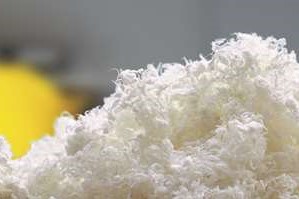 Long-term pulp demand drivers still strong, especially in China
Long-term pulp demand drivers still strong, especially in China
As the global demand for wood pulp grows ever stronger, UPM’s Laura Lundell explains the drivers behind this ever-increasing need.During the announcement of UPM’s Q1 2021 results in April, UPM’s CEO Jussi Pesonen stated that the completion of the USD 2.7 billion Paso de los Toros pulp mill project in central Uruguay next year will see the company’s current pulp capacity grow by more than 50%.
Despite the challenges that Covid-19 has posed during its construction, the investment will sustain efforts to meet future market demand once the mill comes online.
With both short and long-term demand drivers still strong, the 2.1 million tonne greenfield eucalyptus pulp mill, along with the port development in Montevideo and facilities in Paso de los Toros, will ensure UPM’s competitiveness for years to come.
To learn more about why there is continuous growth in pulp demand and what are the factors driving it, we spoke to Laura Lundell, Senior Manager, Pulp Strategy at UPM.
Tissue paper is on a roll in China
“The long-term demand drivers for the pulp industry are strong. They come from the megatrends of evolving middle-class growth and the increasing use of paper packaging materials, tissue paper and specialty paper,” begins Lundell. “Geographically, it is coming mainly from Asia and China. The demand has been increasing for several years and we believe that it will steadily grow in the future.”
A Brookings Institution report stated that the middle-class expansion is expected to be broadly based, but heavily concentrated in Asia. In fact, 88% of the next billion people in the middle class will be Asian, with China’s middle class alone set to expand from 430 million today to 780 million by the mid-2020s.
“Due to urbanisation and middle-class growth, more people are consuming products and goods from supermarkets or restaurants, as well as using tissue paper products, all of which support the growing demand for pulp in end uses, such as tissue and packaging products,” notes Lundell.
Tissue paper, which includes toilet paper, facial tissues, handkerchiefs, napkins, and hand and kitchen towels, is the main area of growth in China and it is also still growing in other markets, too. According to Statista, China’s average per capita tissue consumption in 2018 was 6.2 kg, putting it slightly above the worldwide figure of 5.2 kg and far below the 15.9 kg used in Western Europe.
Specialty papers, such as packaging and label papers, and cardboard are also on the rise in China, says Lundell. The only pulp end use without growth expectation globally is printing and writing, and that has already been decreasing for a longer period of time in Europe and North America.
Pulp demand far from stationary
During the announcement of UPM’s Q1 2021 results in April, Pesonen mentioned that tissue paper end use has been playing a large role in driving the strong pulp price performance over the last six months. He also pointed to the market recovery and continued emergence of China as an indicator that pulp will be in heavy demand for a long time to come.
Pulp demand and its price tend to be cyclical. In fact, the pulp market behaves almost like a commodity market.
“Cyclicality is not related to regular seasonality, but rather it reflects the short-term supply-demand balance,” explains Lundell. “If there are problems with the supply or a strong demand, then it impacts the price. The pulp market in the short term is linked to, among others, end use markets and their drivers, as well as buying behaviour and inventory levels.”
There is some short-term seasonality such as online shopping festivals in China, like Singles’ Day, or even schoolbook seasonality when students return to school, for example.
“We monitor all the short-term indicators and market carefully, but decision-making on large assets, like our Paso de Los Toros mill in Uruguay, is, of course, based on long-term demand drivers, which are supported by the megatrends,” she says.
